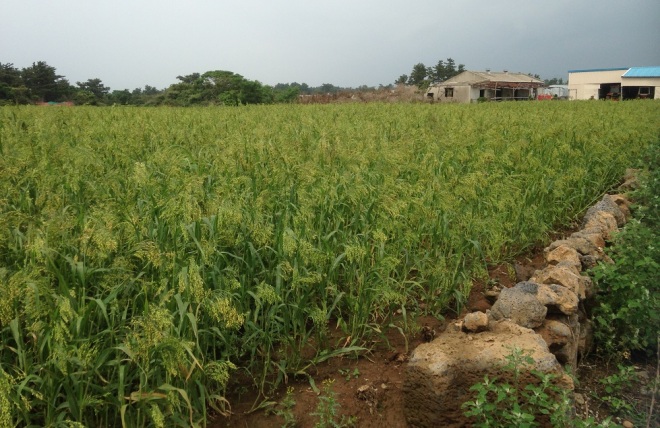From Olle trail 1 we went straight on to Olle trail 2, covering the first few kilometres as it got dark on Saturday evening. This early part passes through wetlands, a habitat for migrating birds, and significant stretches were diverted to prevent disturbance.
The rest of the trail passes through farmland before reaching the coast at its end point at Onpyeong Pogu. There was the usual scattering of grave sites on the side of the oreum that the trail crosses and in fields.
And here’s a kohlrabi to finish with. There are plenty of fields of radish, carrots and potatoes but fewer kohlrabi.
Agricultural machinery, graves and root vegetables; this is the life!






























